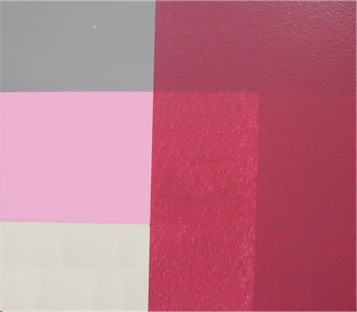
Five Star Painting shares expert tips for painting over tough colors.
|
For years, you might have felt that bright yellow, teal blue, or neon orange-colored paint on the walls looked amazing and served its purpose. Maybe you chose a particular paint color because you wanted to brighten up your exercise room for better motivation during your workouts, or you gave the children some leeway in color selection for their bedrooms. Now, you feel that a change is in order and it’s time to transform your environment with fresh colors. Painting over bright, wild or dark colors is an easy design fix, but may not be as easy as it seems. Color families such as reds, greens, oranges, and blues can be a real challenge. The job requires forethought and careful preparation.
This guide provides some useful tips on how to hide dark paint colors with light paint, as well as covering over bright colors.
How to Prime Difficult Colors
The last thing you want to see after you paint over dark walls is shadows showing through a freshly painted coat. If you paint over a porous surface, the light colored-paint will appear streaky and uneven as the dark color bleeds through. You can keep dark paint colors from seeping through the fresh topcoat by using a quality stain-blocking primer. Paint primer has three functions:
- Prevents stains and difficult to cover colors from bleeding through the topcoat
- Allows for one-coat coverage
- Enhances the paint’s adhesion, which reduces peeling and blister
To boost the effectiveness of the primer to hide the dark paint colors, tint the primer with a gray color or a color similar to the topcoat you’re planning to use. For maximum concealment over dark paint colors, apply two coats of paint primer and sealer, and allow the primer to thoroughly dry before applying the next coat. If you skip this step, you will surely spend more money on paint.
Before you prime, make sure that the surface is sound and free of peeling paint or structural problems. Following conventional methods for prepping the surface, such as filling nail holes, sanding rough spots. Many professionals recommend that you wash the walls with a solution comprised of mild dish detergent and warm water to remove dirt, grease or grime. Cleaning the walls improves adhesion of the primer to the surface and increases coverage.
Check out this demonstration from our paint partners at Sherwin Williams, showing the effectiveness of using a gray primer, versus white or pink:

All-In-One Paint Primer
Many paint manufacturers offer an all-in-one primer paint product that works fine for certain situations, such as repainting a wall with a similar paint and sheen. However, if the surface contain smoke stains water stains crayon marks, etc., over time, a paint and primer in one product would allow the stain to creep to the surface. To achieve the best results when repainting dark paint colors, use a high-quality, dedicated stain-blocking primer.
Choose High-Quality Paint and Painting Tools
If you use a low-quality paint, you can expect poor results when covering difficult colors. A high-quality paint is the best paint to cover dark walls because they contain greater levels of binders and pigments, which are necessary for hiding difficult colors and boosting coverage. Your choice of painting tools will determine the speed and efficiency of applying the primer and paint. Use high-quality roller and paint bushes. These tools deliver the paint in a smoother, thicker coat, which works to conceal the dark color.
Five Star Painting specializes in interior and exterior painting projects for residential and commercial customers. Whether your project is big or small, you can count on us to deliver high-quality workmanship and superior customer satisfaction. Schedule your FREE estimate by choosing the date and time that is most convenient for you, HERE!
This article is intended for general informational purposes only and may not be applicable to every situation. You are responsible for determining the proper course of action for your home and property. Five Star Painting is not responsible for any damages that occur as a result of this blog content or your actions. For the most accurate guidance, contact the Five Star Painting location nearest you for a comprehensive, on-site assessment.
FAQs About Difficult Colors
Our years of experience, attention to detail, and decades-long commitment to exceptional customer service set Five Star Painting apart from the competition. Continuing this high standard also includes using our knowledge and experience to answer your most frequently asked questions about hard colors to paint over.
What’s the hardest color to paint over?
Red, black, and dark greens and blues are all hard colors to paint over. These hues consistently present the most significant hurdles for painters seeking a flawless, opaque finish. However, the difficulty depends on the specific pigment, the quality of the paint, and the color being painted over.
- Red and orange: Vibrant shades like crimson or fire engine red contain strong pigments that tend to bleed through subsequent layers, requiring multiple applications to achieve full coverage. Although changing colors after painting a bedroom red can be a challenge, professional painters can handle the transition with ease.
- Black, blue, and green: Darker shades like navy blue and hunter green feature intense pigments that can resist coverage, particularly by lighter colors. (If you’ve ever tried adding white paint over dark paint, you know how many coats you need for a solid finish!) A primer designed for dark colors is often required.
If you’re ready for a new look in your home or office, consult the experts at your local Five Star Painting. Our experienced service professionals know the best paints, primers, and pigments for painting over hard colors.
Is it better to use a white or tinted primer for dark colors?
Tinted primers are generally considered better for dark colors. “Tinting a primer” simply means altering the color to a hue that more closely matches your final topcoat, enhancing coverage and minimizing the risk of the underlying color showing through. Tinted primers can also result in a more even and professional finish, particularly when transitioning from a dark to a lighter shade.
By contrast, white primers may require multiple coats to fully obscure the dark underlying color, especially if the topcoat is a lighter shade. Similar to the bleed-through effect of applying white paint over dark paint, white primers are less likely to provide adequate coverage in one or two coats.
Most white primers can be tinted at paint or hardware stores or by a painting professional. Although they require an extra step to create, the benefits of a tinted primer outweigh the potential issues of using a plain white primer. Tinted primers provide a more uniform base, reducing the number of topcoat layers needed and saving both time and paint (and money!). For instance, if you’re painting a dark blue wall a lighter gray, a gray-tinted primer will be more effective than a white one.
When you call your local Five Star Painting, our service professionals will consider all aspects of your paint job and select the right primer for your project. You can trust that we will get the color you want for your home or business.
Can I skip primer if I use multiple coats of paint?
While painting multiple coats might seem like a solution to avoid priming, it's generally not recommended, especially over dark colors. Primer serves important functions beyond just coverage: It enhances adhesion, seals porous surfaces, and prevents bleed-through. Skipping primer often leads to uneven coverage, visible underlying color, and poor paint adhesion.
Topcoat paint isn't designed to block intense pigments efficiently; dark paint pigments can bleed through even several layers of topcoat, resulting in a patchy, unprofessional finish. Additionally, without the sealing properties of primer, the topcoat might absorb unevenly into the wall, leading to variations in sheen and color.
If, against professional advice, you decide to skip primer when painting over dark colors, here's a risky approach:
- Thoroughly clean and sand the walls to ensure good adhesion.
- Apply multiple (potentially 3–4) thin, even coats of high-quality paint.
- Allow ample drying time between coats.
- Be prepared for potential bleed-through and the need for even more coats.
- Understand that the final finish may be uneven.
However, using a tinted primer is always the better practice. For example, if you skip primer after painting a bedroom red or other hard colors, the old pigment will likely bleed through to the top coat. Save the time and stress of priming and painting by calling your local Five Star Painting team for a free quote today!


